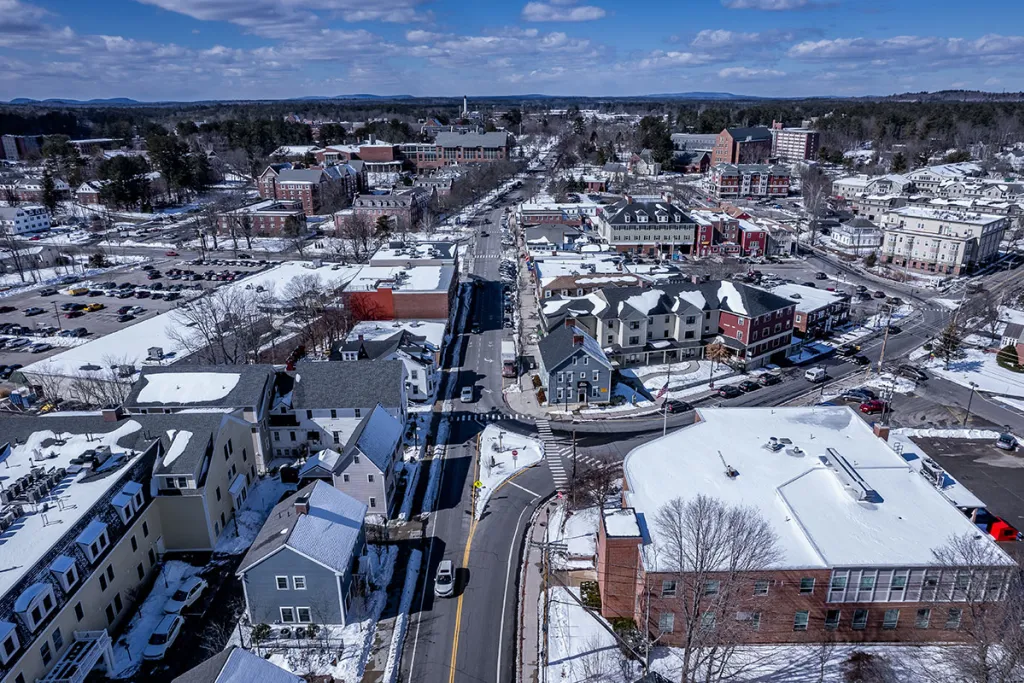To celebrate National New Hampshire Day Sept. 7, USDA’s National Institute of Food and Agriculture (NIFA) is highlighting the innovative NIFA-funded research conducted by the University of New Hampshire (UNH).
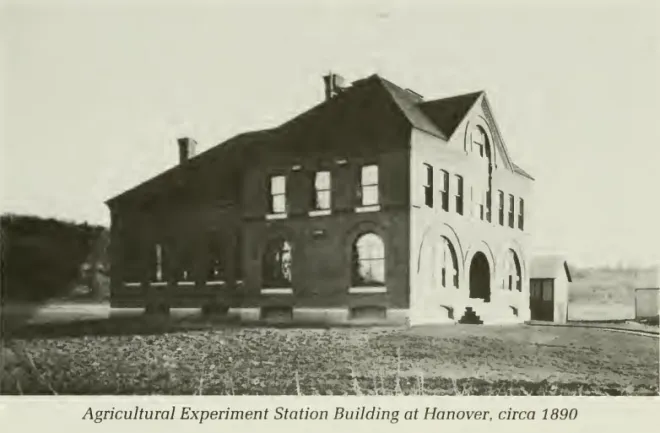
In the following interview with Anton Bekkerman, New Hampshire Agricultural Experiment Station director, and Nick Gosling, New Hampshire Agricultural Experiment Station communications information specialist, learn more about the state’s history and the agriculture challenges UNH researchers are working to combat.
Please provide some historical background on the founding of your agricultural experiment station.
The New Hampshire Agricultural Experiment Station (NHAES) was established in 1887. Initially located at Dartmouth College in Hanover as Dartmouth’s first research center, NHAES was moved to Durham in 1893 to anchor what is now the University of New Hampshire.
Over the years, NHAES has engaged in and led critical research within New Hampshire into such areas as agriculture and aquaculture, dairy and crop science, farm management, nutrition and forestry. From 1939 through 1987, NHAES scientists introduced 110 new plants. NHAES researchers have also broken ground in the breeding of cucurbits, strawberries, kiwiberries, lilacs and many other plants. In 2005, the station established one of the first organic dairy research centers in the country. At this organic dairy and at NHAES’s conventional dairy, researchers have led and continue to lead studies into herd health, forage crops, cattle reproduction and additional areas.
Today’s NHAES scientists work on climate science as well as agriculture. Researchers are looking at changes to soil and water chemistry, forests and watersheds, and farming and agriculture economies as our climate warms and weather patterns shift. At the same time, studies at NHAES are examining understudied and underserved populations, to determine how policy and change can better support these groups.
What are some of your agricultural experiments station’s most notable successes and innovations?
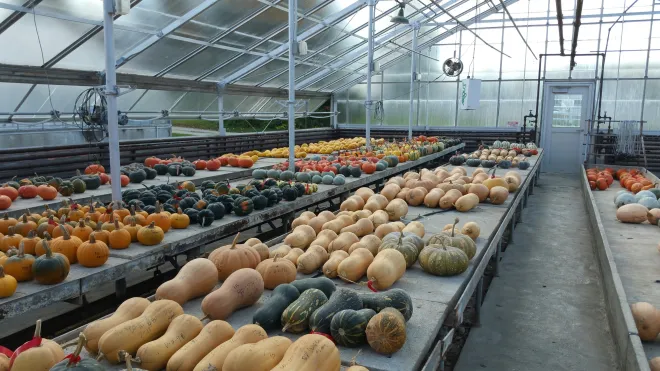
UNH is home to the largest continuous squash and pumpkin breeding program in North America, started in the 1940s by A.F. Yeager and continued by Brent Loy. More than 100 varieties of melons, squash, gourds and ornamental pumpkins produced by this program have become seed varieties for commercial sale and had an important impact on agriculture in the Northeast. Royalties from the sale of new cucurbit breeds have generated more than $2 million for UNH since the founding of the program.
Dairy Science
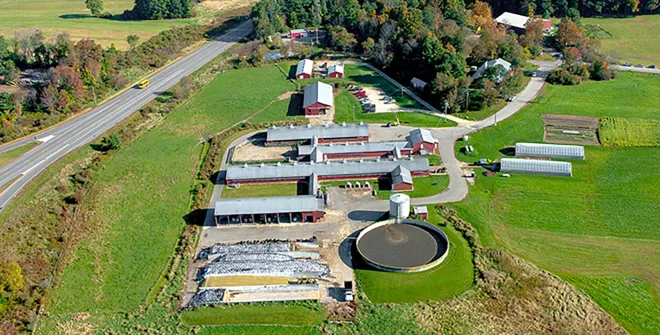
Organic Dairy Research Farm – the first of its kind in the country – was established at UNH in 2005. In 2020, NHAES scientists received a $2 million grant to study the organic dairy industry and methods of making it more profitable. NHAES scientists also established new amino acid feeding recommendations for lactating dairy cows and have led advancements in recommended colostrum recommendations for calves. Today, NHAES researchers are examining how different feed, like seaweed, can reduce methane output of cows and how cover crops can serve as forage food for agriculture animals. In 2021, UNH scientists shared part of a $13 million grant to study the benefits of feeding seaweed to dairy cows.
Fruit and Vegetable Development
NHAES scientists lead the way in breeding and adopting new fruits and vegetables for the Northeast. Today, station scientists operate the only public breeding program of kiwi berries in the country. NHAES researchers were the first to fully map the genetic structure of the wild woodland strawberry, as part of the USDA-supported RosBREED project. Station scientists are also breaking ground in cover crop development, having discovered high-value cover crops, like forage radish, and identified improved ways of labeling cover crop seed lots. In recent years, NHAES has made major advances and investments in protected agriculture. Studies into high and low tunnels have allowed station scientists to significantly extend growing seasons and overwinter various crops. New advances in this area have included growing domesticated strawberries well into November; over-wintering figs, onions and carrots; and growing warm-weather plants, like eggplant and ginger, more productively in New Hampshire. In 2020, NHAES opened a new state-of-the-art, organically certified greenhouse addition to the Macfarlane Research Greenhouses at UNH Durham.
How does the NIFA-funded research conducted by your institution serve the citizens of your state?
Resilient Agriculture
Like many northern New England states, New Hampshire is characterized by a highly diversified agricultural and food system that produces, processes and delivers food, fiber and myriad environmental services for our citizens. Increasing knowledge and technology is key to ensure continued economic well-being for those in the food supply chain, as well as in context of protecting environmental quality and helping to maintain the resilience and vitality of rural communities. Both basic and applied research are needed to ensure that we address shorter term needs—such as market uncertainty, variety development, farm management practices and policies—and longer-term needs, such as climate change. Current work can be categorized by their contributions to plant development, pest and weed management, animal systems, and sustainable culture.
Climate Change, and Soil and Water Science
Research examining the relationship between climate change and its potential impacts on hydrology and soil science is at the forefront of NHAES research. Station scientists are looking how climate change-driven changes to the microbial community in soils will affect soil health – both locally, in New England, and in the thawing Arctic, and how climate change could impact how plant roots and soil microorganisms process nutrients and – by extension – alter crop production. How climate change could potentially impact water quality is another area of focus by NHAES researchers. These studies include better understanding the role of precipitation extremes (droughts verse floods) in water quality and how different water bodies, like estuaries, streams and rivers, cycle nutrients and release greenhouse gases into the atmosphere.
Rural and Community Development
New Hampshire's rural communities continue to evolve and contribute in different ways to the state's economic success and societal welfare. Local food systems (from production to consumption), tourism and natural resource management continue to be critical to maintaining the vibrancy of rural communities in the state. However, with changing demographic and socioeconomic characteristics in rural communities; consolidation of the food processing sector; changes in local, state and federal policies; and the structural changes prompted by the COVID-19 pandemic have created challenges to rural communities maintaining economic resilience. Using science-based, data-driven methods to identify key factors stressing economic and social welfare in rural communities and providing research-informed recommendations at the individual, firm, municipality and state levels are crucial for short- and long-term community sustainability.
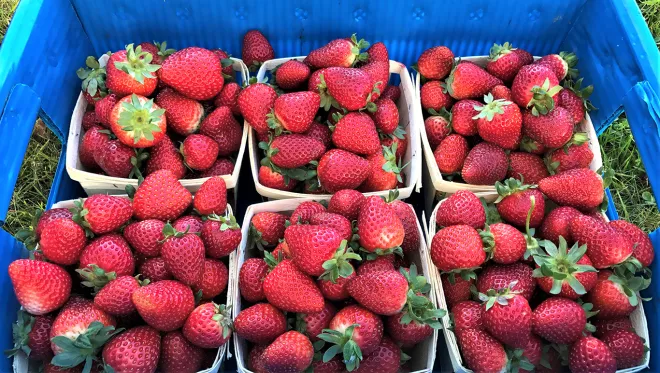
Nutrition and Health
Increasing obesity among Americans tracks increased incidence of chronic diseases and exposes to greater health uncertainties for emerging diseases such as COVID-19. One of the primary needs for assessing food and nutrition policy issues in underrepresented populations is the development of effective measurement tools. NHAES research is helping develop effective tools to assess the healthfulness of college campuses, critical to developing an understanding of and disseminating information about weight gain in young adulthood; and increasing the sustainability of community programming to support and sustain healthier environments for college students. Similarly, the research is helping identify and measure Bhutanese-specific dietary quality, food handling behaviors and insulin resistance, as well as the population’s participation in SNAP-Ed programs.
What are some of the unique agricultural challenges of your state that you are working to address?
Agriculture and natural resources are core contributors to the economy in a state that is 83% forested. Over 95% of New Hampshire farms are small and diversified, and agricultural diversity is growing to encompass the commodity mix of both Northern and Southern New England. Beekeepers raise bees for honey and provide pollinator services. NHAES is developing innovative, science-based solutions and management strategies to enable small, highly diversified farms to thrive in a competitive environment and remain resilient to market and production threats. These management strategies are developed in tandem with a mission to have agricultural and timber production be sustainable solutions to economic and environmental challenges.
Going forward, how do you see your NIFA-funded research addressing your state’s most pressing issues?
NHAES will continue to be the state's innovation and research leader for agricultural, food, natural resources and environmental issues. Our mission is to steward public resources to elevate the economic, environmental and societal well-being of every Granite Stater. These strategic investments will enable NHAES research to advise New Hampshire public policy leaders, business owners and communities about how scientifically informed, sustainable agricultural and natural resources management can be a solution to some of our state’s, region’s and country’s most pressing economic and environmental challenges.
Top photo: United States of America lights during night as it looks like from space. Image courtesy of Adobe Stock.

